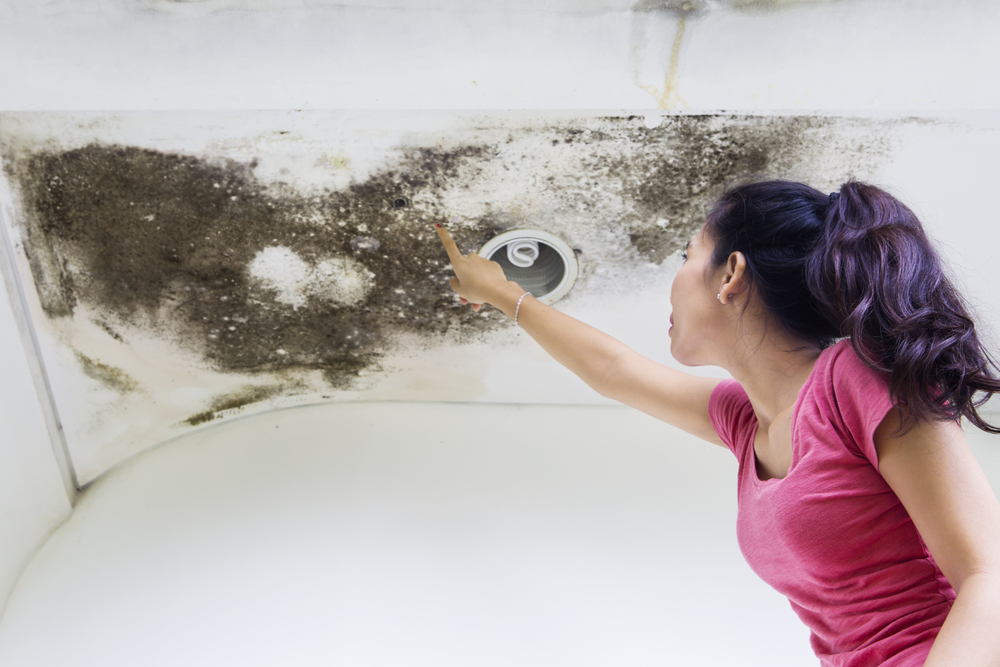If you’ve recently had a water leak in your home, the first order of business is to fix the leak and clean up the mess. But what about the damage that’s been done to your ceiling?
A water-damaged ceiling can be a huge headache for many reasons. First, it can be a safety hazard. If the ceiling is sagging or has any visible water damage, it could collapse and seriously injure anyone who is underneath it.
Second, water damage can cause mold and mildew to grow, which can lead to health problems for you and your family.
This issue can also decrease the resale value of your home. Once you sell it, you might end up not getting less or struggling to find a buyer.
Waiting until water damage has become more severe is also pain on your bank account. The longer you wait to fix the problem, the more expensive it will be.

So how do you go about fixing a water-damaged ceiling? Here are some tips:
1. Assess the Damage
First, assess the damage and determine whether you can repair it yourself. You may be able to DIY it if the damage is not too severe.
If the water damage is extensive, you will need to call a professional to help you with repairs. When choosing your contractor, consider the following:
- Make sure they are licensed and insured.
- Check reviews online to see what others have said about their work.
- Ask a few estimates before making your final decision.
- Get a written estimate of the repairs that need to be made.
- Find one that specializes in water damage affecting the ceiling.
The right contractor will then perform the following:
- Dry out the area to prevent mold growth.
- Remove any damaged materials.
- Install new insulation (if necessary).
- Repair or replace the drywall.
- Repaint the ceiling.
2. Know Simple DIYs
There are a few simple DIYs you can do to help with the repair process. These include:
- Repairing small cracks with caulk
- Filling in nail holes
- Applying putty to dents or scratches
- Wiping down the area with a bleach solution to prevent mold growth
You can also try painting over the water-damaged ceiling to cover up any blemishes. But keep in mind that this is only a temporary fix.
It’s essential to address the root of the problem so that it doesn’t happen again in the future.
3. Check Your Home Insurance Policy
If the water damage was caused by a leak in your home, you may be covered by your homeowners’ insurance policy.
Most policies cover accidental water damage from things like burst pipes or leaking appliances. But check your policy to see what is and isn’t covered.
If you are covered, your insurance will likely cover the cost of repairs. They may also pay for the cost of temporary housing if you need to move out while repairs are being made.
Once you’ve filed a claim, an insurance adjuster will come to your home to assess the damage and determine how much your policy will pay out.
Remember, however, that you will likely have to pay a deductible before your insurance policy starts to cover the cost of repairs.
Deductibles are usually a percentage of your home’s total value. If your home is valued at $200,000 and your deductible is 2 percent, you would have to pay $4,000 out of pocket before your insurance would start to cover the cost of repairs.
4. Find Temporary Housing
If the water damage is extensive and you need to move out while repairs are being made, you will need to find temporary housing.
This can be a hotel, an Airbnb, or even a friend’s or family member’s house. If you have homeowners’ insurance, your policy may cover the cost of temporary housing.
If you don’t have insurance or if your policy doesn’t cover it, you will have to pay for it yourself. The cost of living in a hotel or Airbnb can add up quickly, so compare prices and find the most affordable option possible.
You may also want to ask friends or family members if they would be willing to let you stay with them for a few weeks. This can be a cheaper option than renting a hotel or Airbnb, and it can also be more convenient since you won’t have to pack up all your things and move them to a new location.
5. Work with a Roofer
If the water damage was caused by a leak in your roof, you will need to work with a professional roofer to make repairs.
First, they will inspect your roof to assess the damage and determine what needs to be done. They may need to repair or replace damaged shingles or other materials.
They will also likely need to install new flashing around your chimney or vents. Once they have repaired the damage, they will apply a sealant to prevent future leaks.
It’s important to choose a reputable and experienced roofer when making repairs. Ask for recommendations from friends or family members who have had similar work done in the past.
Check reviews online and ask for estimates from a few different companies before making your decision.
6. Avoid Doing These Don’ts
Even if you’re eager to get started on repairs, there are some things you should avoid doing. These include:
- Don’t use a blow dryer to try to dry out the area. A blow dryer can contribute to further damage by causing the ceiling to collapse.
- Don’t use a vacuum cleaner to remove water. Otherwise, you risk damaging the vacuum cleaner.
- Don’t try to remove mold yourself. Mold can be dangerous, so it’s best to leave the job to a professional.
- Don’t paint over the area without first repairing the damage. This will only temporarily cover up the problem.
- Don’t use any electrical appliances in the area until it has been repaired. Otherwise, you risk electrocution.
- Don’t skimp. When it comes to repairing water damage, it’s important to do the job right or end up with more problems in the future.
Making repairs to a water-damaged ceiling can be a daunting task. But with the right information and help, it doesn’t have to be. Follow these steps to get your ceiling back in tip-top shape.

